Garrattfan's Modelrailroading Pages

AD60
6.1 Motorizing the units
I started the motorizing job before I did the valve gear. I ended motorizing after completing the valve gear. That is why you may see photos without valve gear at first. |
|
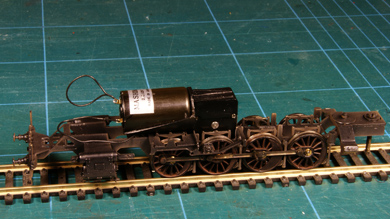 |
This is how the motor should be installed. Straight out of the box it didn't work. It was rock solid. The gearbox is fastened way too tight around the axle so I cleaned it all up. Then it moved.
.But the noise was LOUD!. Two things were found during a first test round
Without the motor and gearbox the chassis would run freely without excessive resistance. The motor and gearbox alone would run nicely except for the screeching sound. So the motor overload clearly originated from the combination. |
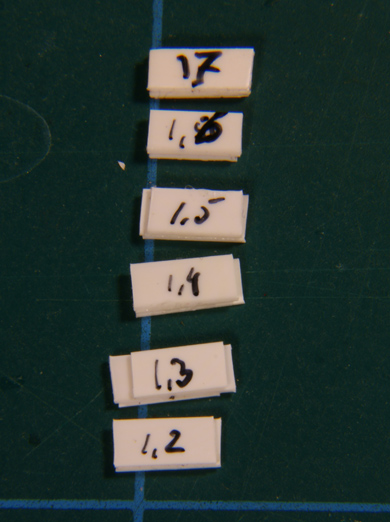 |
During test I found that the motor would suddenly run freely when I lifted the gearbox a little from the axle. I guessed that the gear were squeezed too tight.
To test my theory I made several styrene shims of increasing thickness. The idea was to lift the motor's business end at the yellow arrow. |
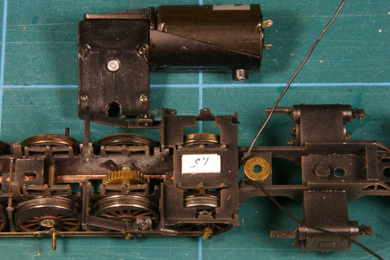 |
I tried the 1.7 mm shim first but the gears would not mesh. Gradually I worked my way down. I also moved the brass washer from the bottom side of the frame to the top side. This lifted the motor on the nonbusiness end. With this I found the 1.4 mm shim to produce the best results. Later I glued the shim to the motor frame and painted it black. |
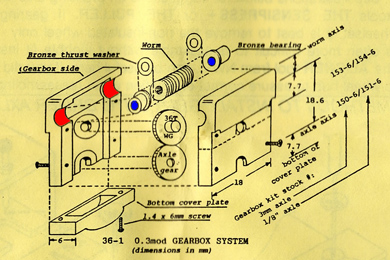 |
A quick search on the internet and some help of modellers soon revealed that the screeching of the gearbox was likely to be caused by misaligned bearings. I filed the red surfaces in the gearbox housing a little concave over on third of each end, so leaving one third in the middle in its original width. That allows the bearings to wobble a little and doing so to align themselves. The screeching immediately disappeared. |
I could now do a second test run. Although the mechanism isn't entirely soundless it could absolutely stand the test. |
|
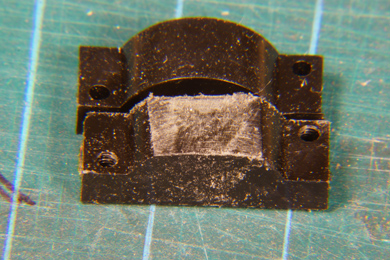 |
I suspected the motor covers on the bottom end of the gear box to be too low. So as a matter of precaution I filed the down as far as I dared |
With the experience gained from the first unit I could relatively quickly motorize the other one |
|
During testing I found the front unit running erratically. I tested and tested to no avail. In a hunch I disconnected the wiring from the motor and connected the leads directly to the motor. It ran flawlessly. I began to suspect an electric short via the wipers. I was right. A few simple remedies:
With this as end result |
|
When content I loosely assembled the whole loco and relished at the sight: The crackling sound in the background is firework, not for the first run of the AD60 but this video was recorded on 31 December 2015 and the firework is in advance of New Year's Eve. |
|
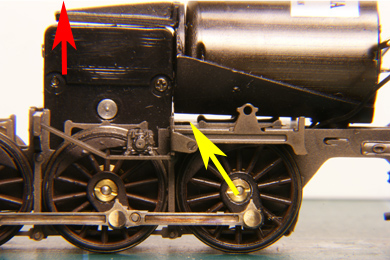


Sign my
GuestBook